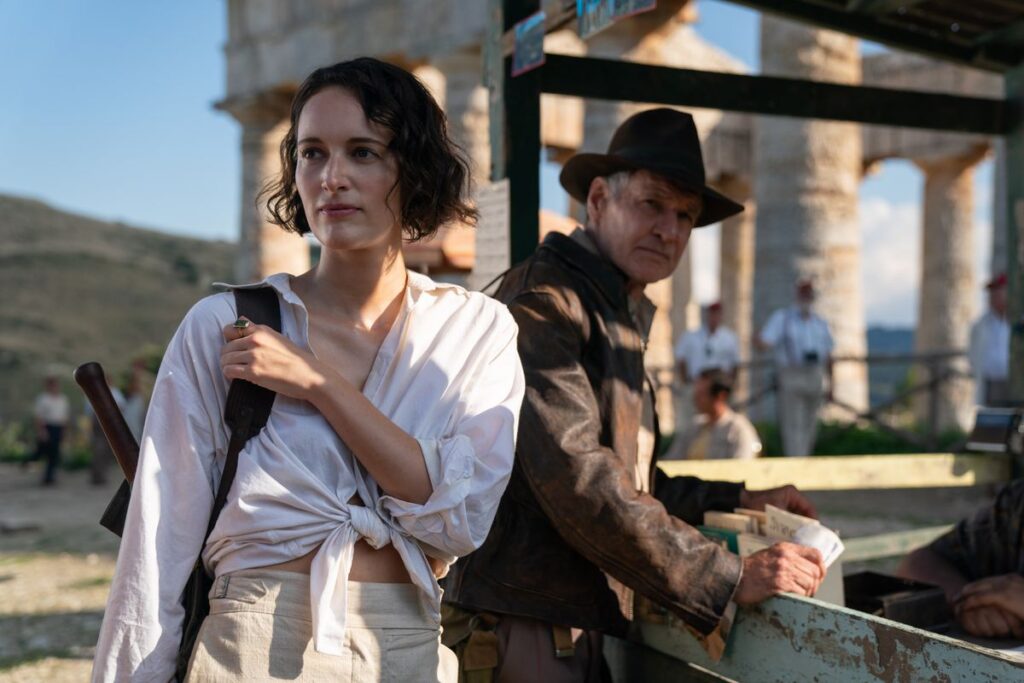This review of Indiana Jones and the Dial of Destiny comes from the movie’s premiere screening at the Cannes Film Festival. Expect more on the movie as we get closer to the film’s theatrical opening in June.
Like Luke Skywalker or Citizen Kane’s Charles Foster Kane, Indiana Jones is one of those characters who almost feels synonymous with film itself. Steven Spielberg’s series of films following an archeology professor moonlighting as a swashbuckling hero is so quintessentially cinematic that watching Indiana Jones spring away from a giant rolling boulder in Raiders of the Lost Ark is a childhood rite of passage.
The same can’t be said for the notorious Indiana Jones and the Kingdom of the Crystal Skull, the 2008 sequel that nuked the franchise. (And the fridge.) So it’s not surprise that the new Indiana Jones and the Dial of Destiny is an attempt at course correction. Director James Mangold has taken the franchise reins from Spielberg for a back-to-basics adventure traversing continents in a race against the Nazis.
In 1969, Indiana Jones (Harrison Ford) is long past his days of treasure-hunting. Much like Ford’s media persona, Indy is surly and hardened, the cranky old neighbor you steer clear of. It quickly becomes apparent that he’s bitter, maybe even depressed, over the divorce papers sitting on his counter, sent by long-ago love interest Marion (Karen Allen). On the day he retires from his university teaching gig, he’s approached by Helena Shaw (Phoebe Waller-Bridge), his goddaughter and the child of his friend Basil (Toby Jones) from the good old World War II days. She’s searching for the Antikythera, the long-lost artifact of Archimedes’ that drove her father a little delusional, and is rumored to guide its user to “fissures in time.” In other words, the ability to travel through time.
Photo: Jonathan Olley/Lucasfilm
Also on the hunt for the Antikythera are a group of remnant Nazis — led by scientist Jürgen Voller, played by an emo-haircut-sporting Mads Mikkelsen — who need the device for nefarious Nazi purposes to do with rewriting the war. Indy has to dust off his famous hat, perhaps for the last time.
Dial of Destiny is front-loaded with rousing action sequences, from a fistfight atop a moving train to a frantic race through New York’s subway tunnels on horseback. A tuk-tuk chase through Tangiers’ meandering alleys is equally enthralling, especially as Helena and Indiana jump and tussle from vehicle to vehicle. But as the sequences become more explosive and the scale amps up, unreal visual effects take over. The climactic dogfight is digital sludge, and it offers nothing that’s visually enticing.
Mangold is a very fine director capable of helming solid crowd-pleasers (Ford v Ferrari, Walk the Line) and even breathing new life into the dying X-Men franchise with Logan. But Indiana Jones and the Dial of Destiny looks anonymous. Its visual style is drab in a way that drains the film of any personality. When Indiana Jones makes his way through boobytrapped caves in torchlight in Raiders of the Lost Ark, the contrast between the outside world and this creepy tomb evokes a singular wonder. But virtually every scene in darkness here is scantily lit and hard to see. And like many a modern blockbuster, Dial of Destiny leans on rapid cuts that heighten the pace of Indiana’s brawls with the Nazis, but the choreography is barely discernible.

Image: Lucasfilm
Judging by the way Harrison Ford welled up at the Cannes premiere when talking about Indiana Jones, this is one of the characters he treasures most, and he gives it his all in the character’s supposed final outing. Indiana Jones navigates the high-octane set-pieces with the understandably sluggish clumsiness of an older man, while still packing a mean punch. (At one point, he complains about his “crumbling vertebrae.”) But Ford also delivers pathos in the film’s quieter scenes, where his stoic demeanor drops during tender moments of reflection.
Like Spider-Man: No Way Home reuniting past Spider-Men for nostalgic clout, this is another legacy sequel that sacrifices story in favor of frequent cameos, wringing out the franchise goodwill for all it’s worth. Mangold (who co-wrote the screenplay with Jez Butterworth, John-Henry Butterworth, and David Koepp) clunkily sprinkles in nodding references to Indy’s past adventures: a run-in with deep-water eels leads to a wink-wink joke about how they look like snakes, and the futility of his whip against gunfire recalls that fight from Raiders of the Lost Ark.
And just when it looks like Mangold might commit to a bold move at the end of the story, the film pivots away for a saccharine farewell that once again aims at fan service and recognition, taking all of Indiana Jones’ agency away for the sake of one last cameo. That decision reflects what legacy sequels largely represent: It concludes a story not in a way that gives its characters justice, but in a way that appeases the broadest audience looking to reminisce about something they loved in the past.
For a film that attempts to course-correct on the downbeat ending that Crystal Skull left behind as the previous series-capper, Dial of Destiny is surprisingly bland. It’s a disappointing facsimile of the much better Indiana Jones films that preceded it. It’s all competently put together, with entertaining enough sequences to capture an audience for its lengthy two-and-a-half-hour run time. But it plays the game so safely that there are few memorable moments at all. Ultimately, the film is just a painful reminder of how good we used to have it.
Indiana Jones and the Dial of Destiny debuts in American theatrical release on June 30.

